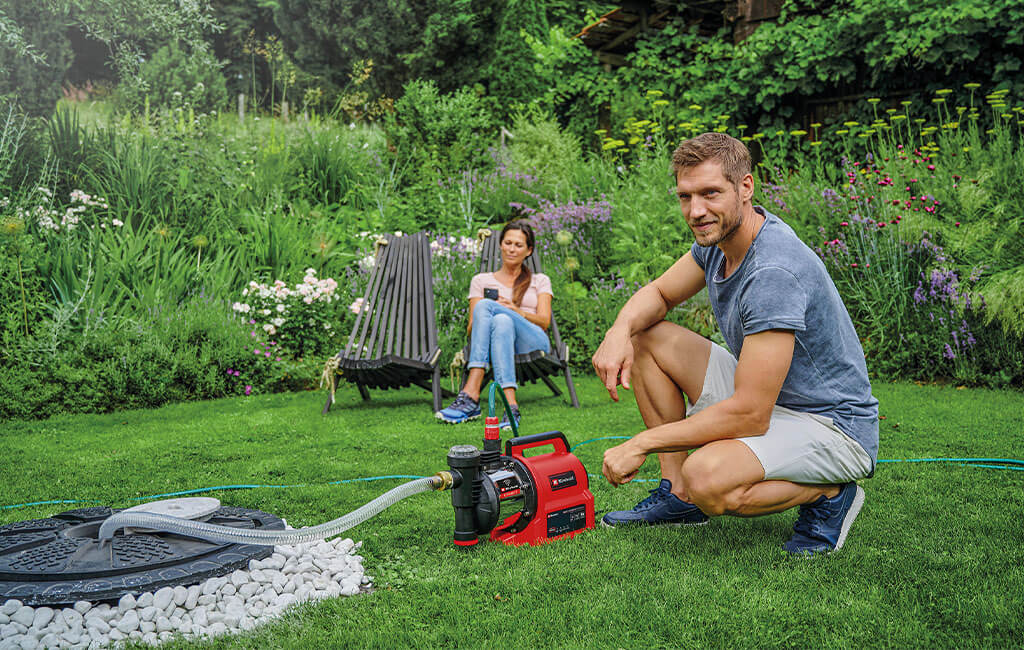The smart way to use rainwater: sustainable solutions for watering your garden
Water is an important and often scarce commodity, especially nowadays. Therefore, it is important to handle the precious resource carefully and above all to save drinking water wherever possible. It can be easily replaced by rainwater in certain areas. For example, when it comes to watering plants and gardens, rainwater offers a natural and cost-effective alternative. Especially in dry and hot summer periods, you can't rely on occasional rain showers to properly water your garden. Instead, you can create ways to catch the water, collect it, and then use it to water your plants.
In this blog post, we'll show you different ways to use rainwater, how to collect raindrops, and which pumps will help you get the rainwater where you need it straight away. To do this, you can find sustainable solutions to take care of your home's greenery in a more environmentally friendly way.
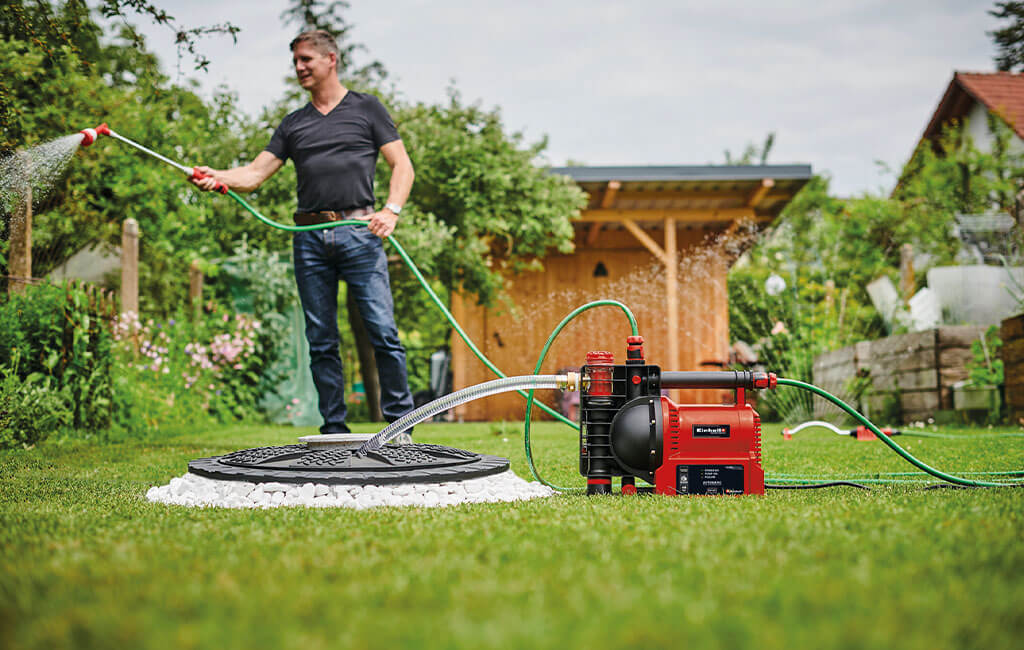
Why harnessing rainwater is so beneficial
Water scarcity is far from being a brand-newnew problem. Because the population is growing steadily, not only do private households consume more water, but the demand in industry and agriculture is also increasing. This is not least due to climate change, which repeatedly manifests itself in extreme weather conditions. Temperatures are climbing higher and higher, droughts occur in summer, and the irregular and less frequent rain showers cannot cover the water demand alone. This results in groundwater levels dropping in many places – especially in areas with many sealed surfaces, where water cannot penetrate the ground. For these reasons, and many more, you should be careful with the precious resource and above all save drinking water wherever possible. This is where harnessing rainwater comes in.
Benefits of rainwater harvesting
- Conserving resources: By using rainwater, you contribute to the sustainable use of drinking water, which is a finite resource and already dangerously scarce in some parts of the world.
- Saving money: Rainwater falls from the sky free of charge, while drinking water must be paid for with the maintenance of piping systems, treatment plants, etc.
- Relieving supply systems: By using less tap water, this relieves pressure on the system around the drinking water supply as well as the sewer system.
- New groundwater: If you water lawns and plants with rainwater, it can seep into the soil, where it ultimately remains as new groundwater.
Rainwater facts
Unlike drinking water, the water naturally produced by rain does not have to be treated and therefore does not contain any chemical additives. In addition, rainwater is not mineralised, so it contains less calcium, magnesium and sodium, for example, and contains no limescale, meaning that it is very soft and pure. This makes it ideal for watering and promotes the growth of many plants.
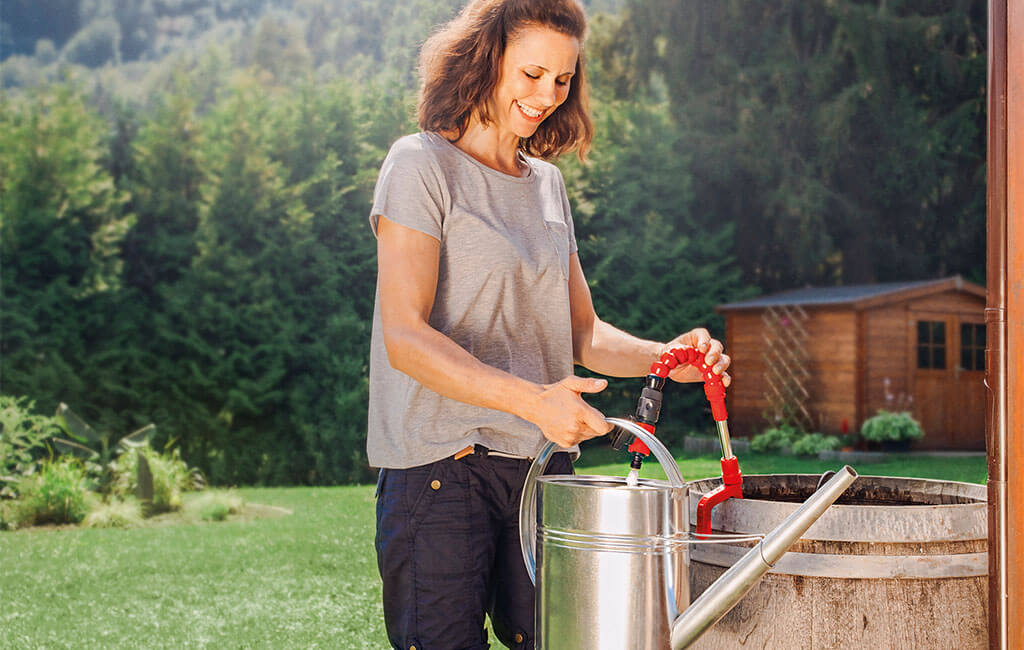
Ways to collect rainwater
Before you can start putting rainwater to use, it first has to be collected. There are various ways to do this, which differ depending on the cost and capacity of your water store.
Rain barrels
A very common option that can probably be found in most garden is the rain barrel. The advantage of a rain barrel is clear: It can be placed without much preparatory work. Rain barrels are quite cheap, although they will need to be replaced eventually. In addition, you can place several barrels around your home and garden, preferably wherever a rain gutter goes into a downpipe. This allows the water that runs over the roof and is collected in the rain gutter to ultimately make its way into the rain barrel. Incidentally, you can use this principle to catch rainwater on all roof surfaces, provided you install a rain gutter – whether on the roof of your house, your garage or your garden shed. However, caution should be exercised with rain barrels in winter, as freezing water can cause them to burst. So, before the temperatures drop into minus figures, you should make sure to empty the barrel.
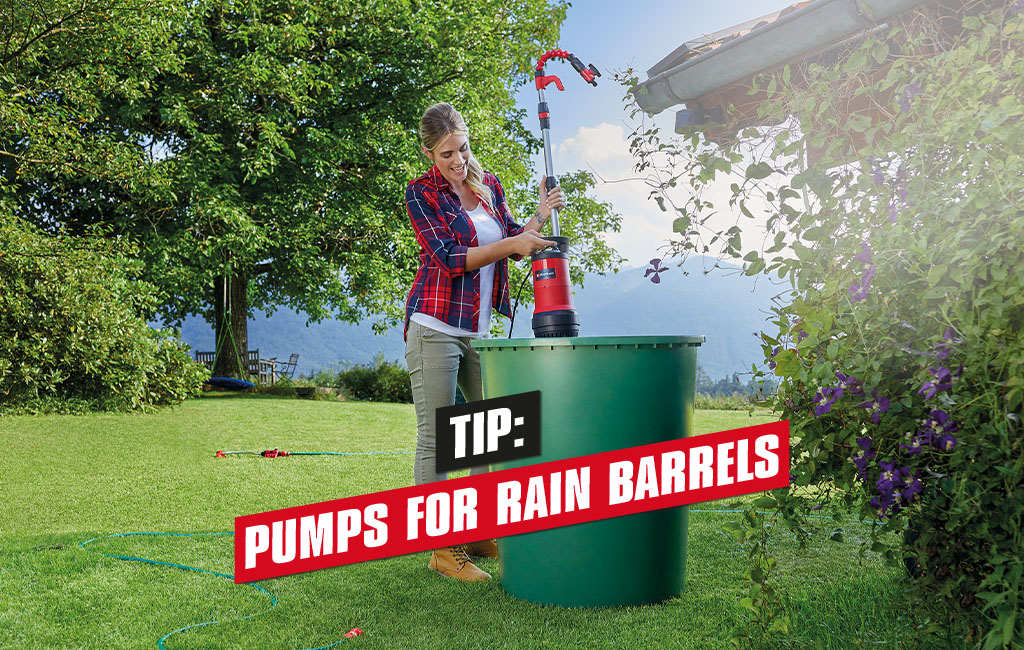
Pumps for rain barrels
To use the collected water, you can choose a rain barrel with an integrated tap and fill it into watering cans. If you have a rain barrel without a spout, it is best to use a rain barrel pump or a cordless clear water pump with a flexible gooseneck. This allows you to hang the pump on the barrel and, for example, connect the garden hose to the gooseneck or fill the water above it in watering cans.
Underground tanks
Don't want rain barrels visibly on display in your garden, but still want to collect rainwater? Then opt for underground tanks where you can collect the water and even store and use it throughout the winter. Underground tanks also have a larger volume and do not take up any space at all in the garden. The tanks are available in various designs and sizes, from flat tanks to round models, to plastic tanks or masonry tanks. Although the purchase and installation of an underground tank is significantly more expensive than the use of rain barrels, it can pay off, especially with very extensive rainwater use.
Pumps for underground tanks
Which pump you use for your tank depends less on the tank and more on how many litres of water you need where and for what. As a rule, suction pumps are used for underground tanks, i.e. surface pumps such as garden pumps, domestic water dispensers or domestic waterworks, which suck in the water using a hose and pump it up with sufficient pressure. Thanks to the high delivery pressure, you can also connect lawn sprinklers directly to the pump for garden watering.
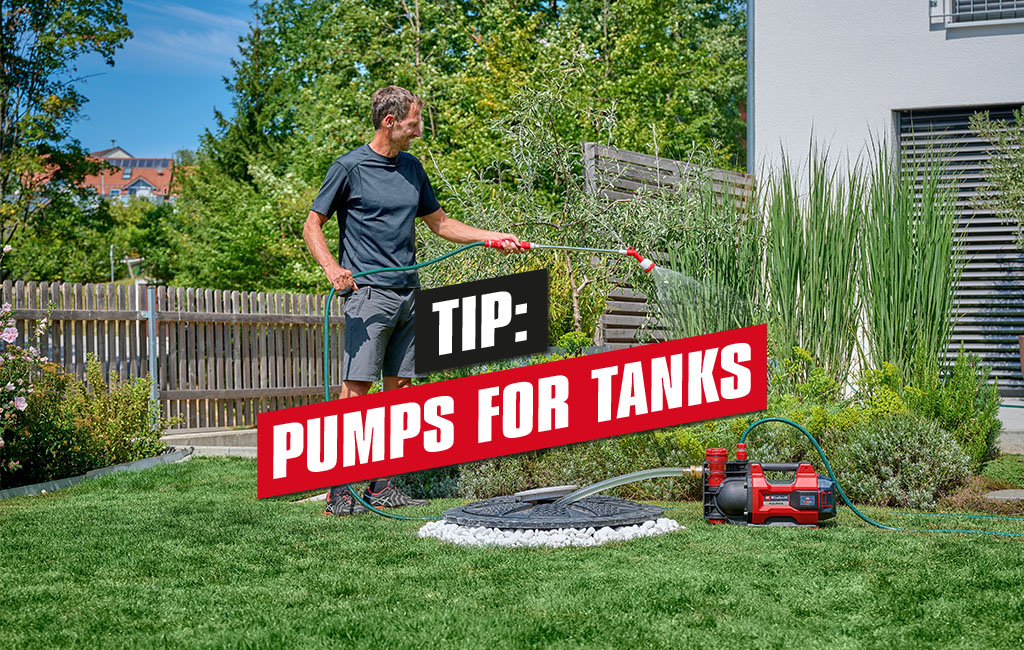
If you are looking for a submersible pump for your cistern, you should look for a submersible pump or deep well pump, because these work with enough pressure to be able to cope with the necessary head from the underground tank to the surface.
Rain gutters as an important supply line
Want your roof and rain gutter to serve as a supply line for your water reservoir? Then you should make sure to clean your gutters regularly so that dirty water is not collected in the rain barrel. To filter the water before it gets there, you can consider installing a pre-filter in the downpipe of your gutter. It's worth remembering that you should clear your gutters of coarse dirt and leaves after autumn and winter anyway. Incidentally, this is very easy with our cordless leaf blower and the gutter set.
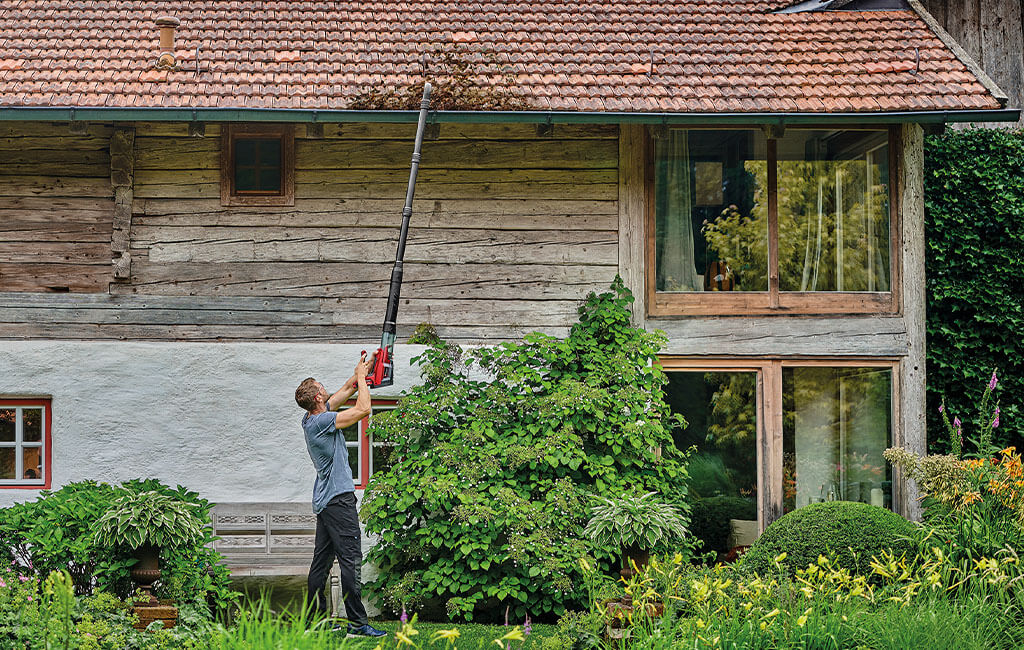
Where you can use rainwater
Around the house and garden there are several options for which you can use rainwater. Primarily, you can make garden watering easier, because with the natural and soft rainwater, plants, beds, lawns, vegetable patches and orchards can be optimally watered.
Apart from that, you can also support the domestic water supply with it. To do this you need domestic waterworks, automatic water works or an automatic garden pump. For example, you can then use rainwater to flush the toilet or in the washing machine. But be careful: Depending on where you live, it may be required by law that drinking water and rainwater run in separate piping systems. And the installation of a separate rainwater pipe involves considerable costs. So, think about where you want to use the rainwater and how much you are willing to invest in this.
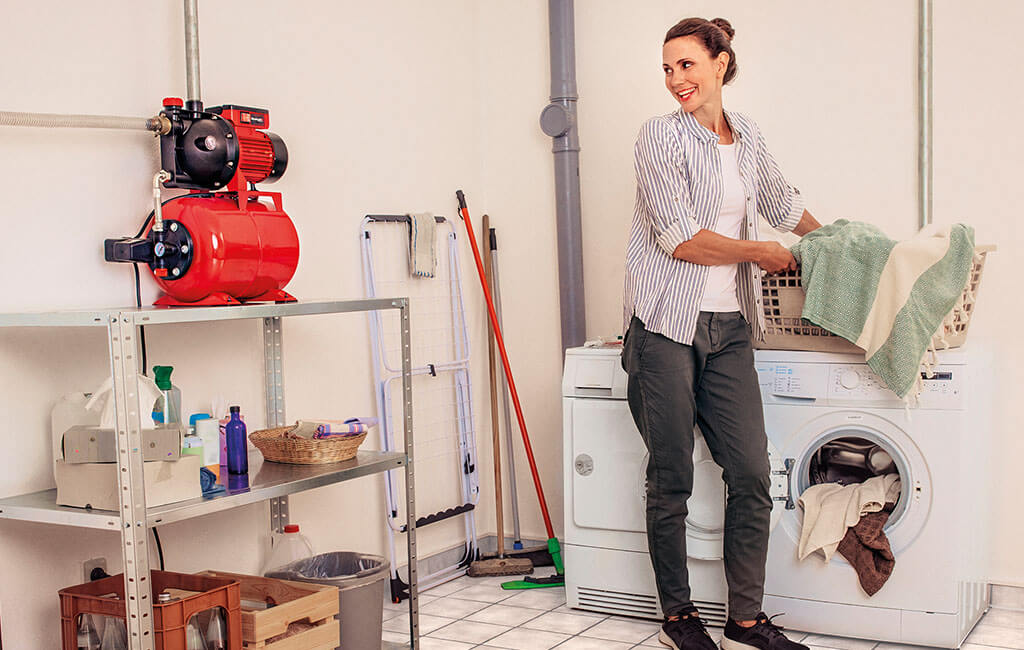
Tools for garden watering
How exactly you decide to water your garden should depend on the size and structure of your garden. We have listed the most common methods of garden watering for you:
- Lawn sprinklers: For large lawn areas, lawn sprinklers or sprinkler systems are usually used. For these systems, the connected pump should operate with a sufficiently high delivery pressure. Here, for example, a powerful garden pump is worthwhile.
- Drip watering: A micro-drip system can be installed in flowerbeds, under hedges or perennials. With this watering system, the water only comes out in drips from small holes in the hose. This ensures that plants do not dry out.
- Garden hoses: Garden hoses with spray gun can be found in every garden. The disadvantage of this solution is that gardeners have to make sure they regularly take care of all the watering themselves. On holiday? Without an automatic watering system, you will be dependent on the help of family, friends or neighbours.
- Watering cans: The classic for any garden or balcony. Although watering cans are mainly used for indoor plants, the potted plants in the garden can also be watered in a targeted manner.
- Pressure sprayers: Young plants, cuttings and freshly planted seeds in particular should be watered very carefully. Pressure sprayers are ideal for this thanks to their fine spray settings.
Bonus tip: Automatic garden watering!
Often on the road and travelling, but don't want to come home to find your garden completely dry? Then opt for automatic watering! You can connect your watering system – whether an irrigation system, sprinkler or lawn sprinkler – to your smart garden pump. Our automatic home and garden pump GE-AW 1144 SMART can be easily controlled via an app using a mobile phone connection. You can individually decide when the pump should work and can even network it with other devices such as our smart robotic mower. In addition, the pump independently accesses current weather data so that your garden is not watered when it is raining.

